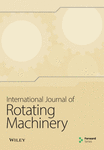Impulse Turbine with Self-pitch-controlled Guide Vanes for Wave Power Conversion (Effect of Guide Vane Geometry on the Performance)
Abstract
An impulse turbine with self-pitch-controlled guide vanes has been developed specially for wave energy conversion by the authors. Based on that work, a large turbine of 1 m diameter has been fabricated and operated on the west coast of India. In a practical turbine system, the guide vanes need substantial supports in order to heighten the strength. Such supports affect the performance of the turbine. In this paper, the etfect of guide vane support geometry on starting and running characteristics of the turbine was investigated experimentally. Two types of cross sections of support were studied, that is, circular type and airfoil type. The effect of support length was also studied.




